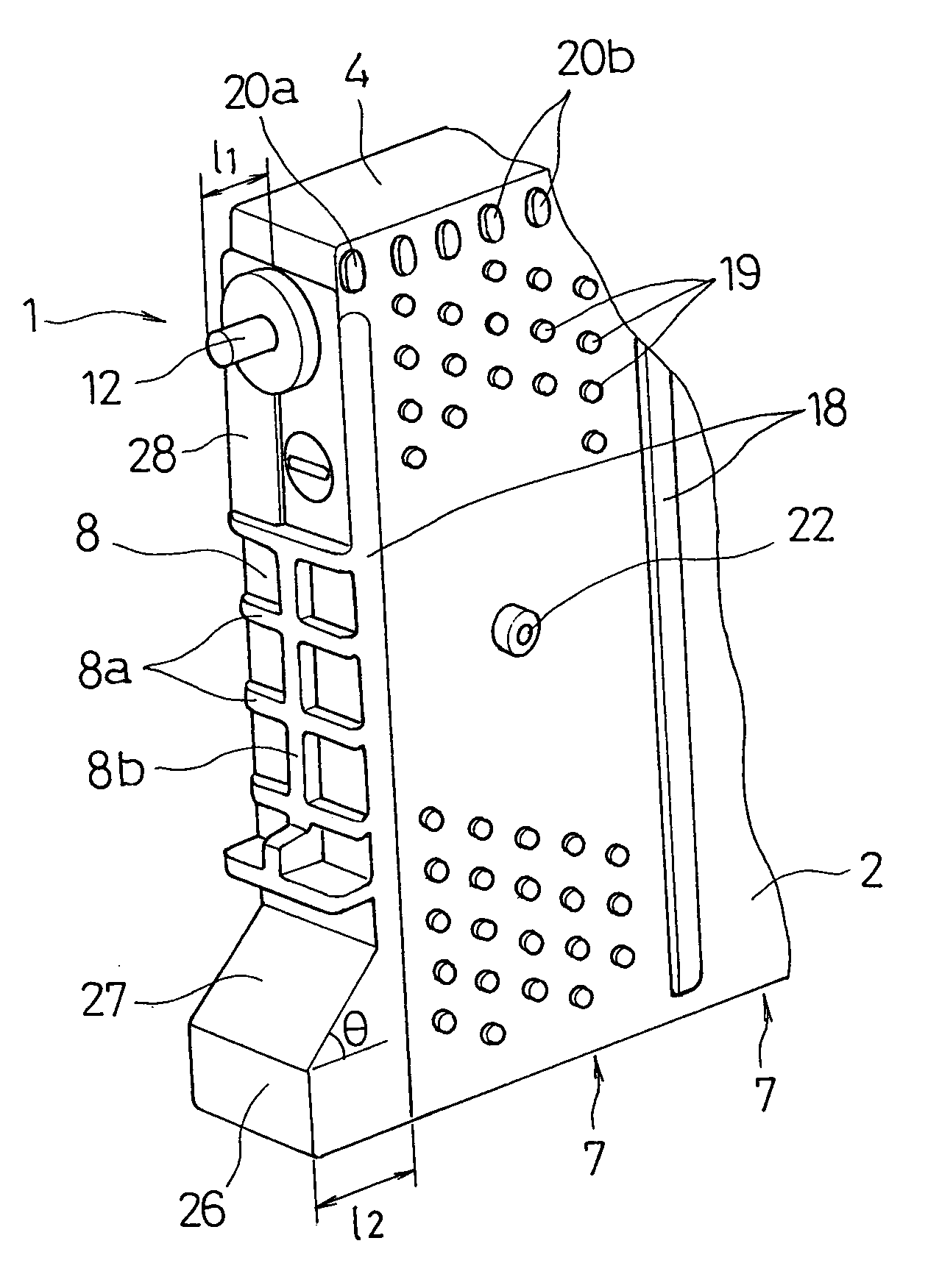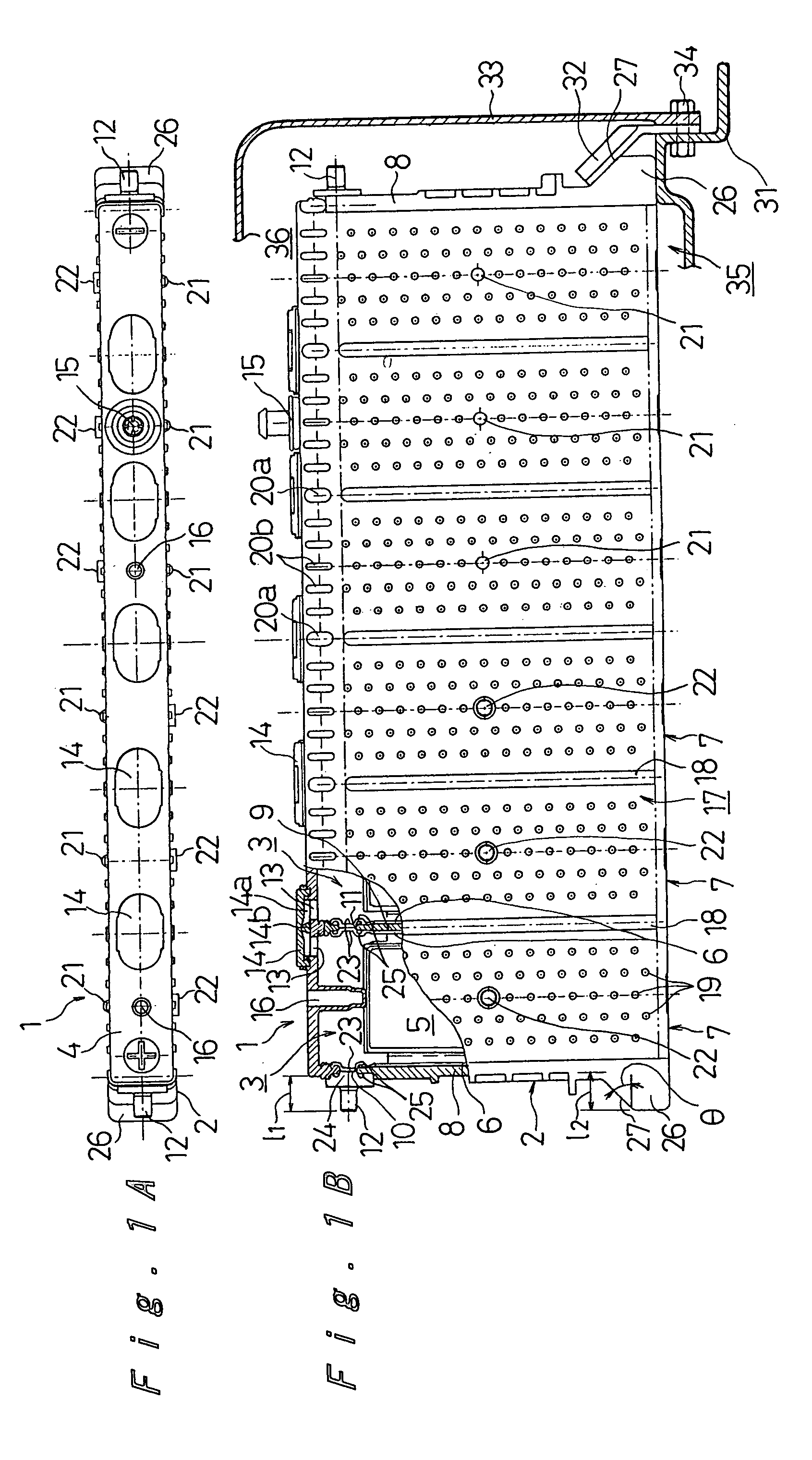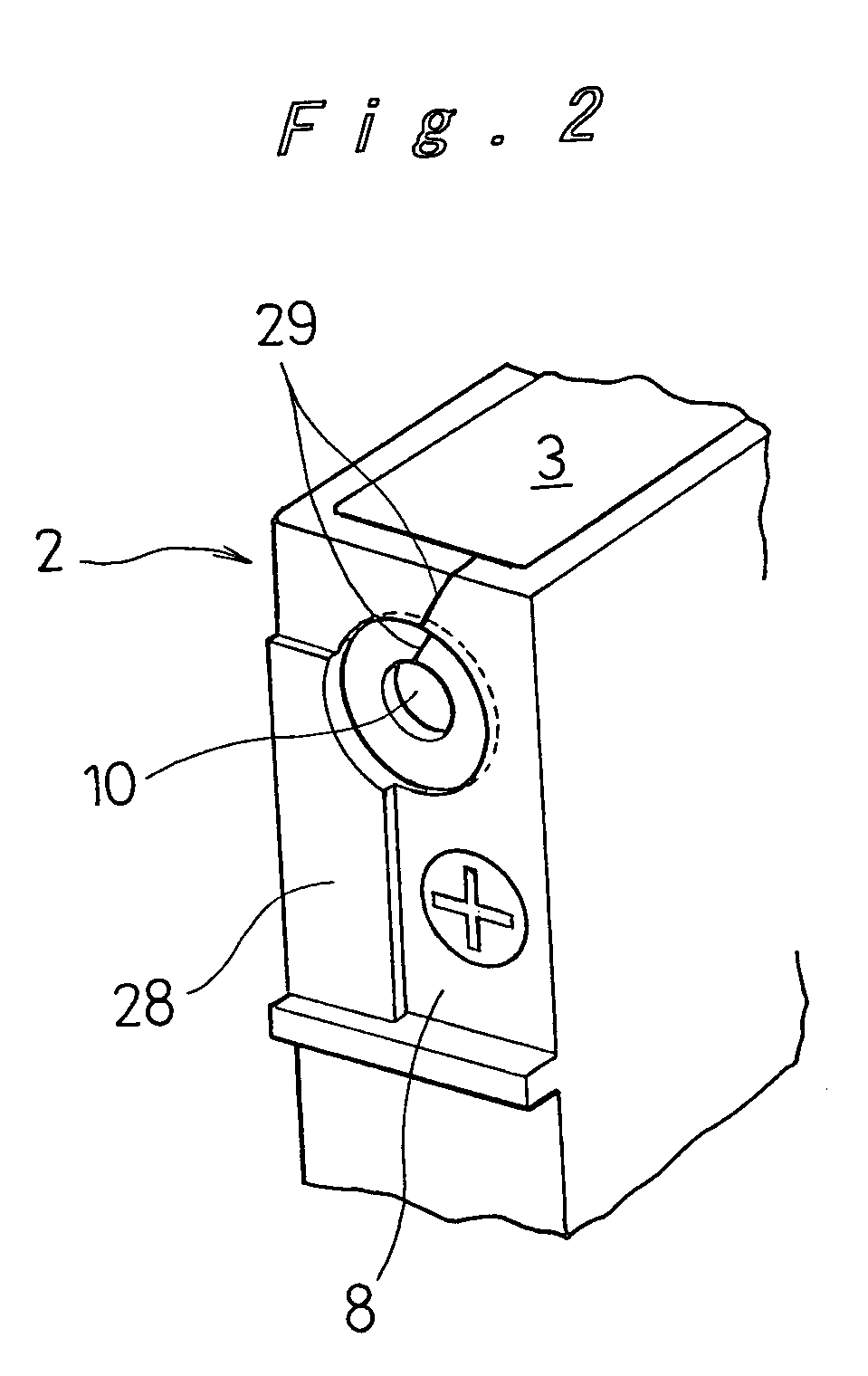Structure for electrode terminals of battery module
a battery module and structure technology, applied in the direction of cell components, sustainable manufacturing/processing, final product manufacturing, etc., can solve the problems of electrode terminal b, short circuit, and complicated connection structure,
- Summary
- Abstract
- Description
- Claims
- Application Information
AI Technical Summary
Benefits of technology
Problems solved by technology
Method used
Image
Examples
case 3
[0029]Each cell case 3 contains an electrode plate group 5, comprising numerous positive and negative electrode plates that are parallel to the long-side surfaces of the cell case 3 and that are stacked in the short-side direction with separators between them, and collector plates 6 that are joined to both ends of this electrode plate group 5. The result is a cell 7.
[0030]Each electrode plate group 5 comprises numerous positive electrode plates and numerous negative electrode plates disposed in alternating fashion, and each positive electrode plate is covered with a sheath-like separator having openings in the lateral direction. The lateral edges of the group of positive electrode plates protrude beyond the group of negative electrode plates on one side, and the lateral edges of the group of negative electrode plates protrude beyond the group of positive electrode plates on the opposite side, and these protruding lateral portions form the lead portions, to the lateral ends of which ...
PUM
| Property | Measurement | Unit |
|---|---|---|
| angle of inclination | aaaaa | aaaaa |
| angle of inclination | aaaaa | aaaaa |
| angle of inclination | aaaaa | aaaaa |
Abstract
Description
Claims
Application Information
 Login to View More
Login to View More - R&D
- Intellectual Property
- Life Sciences
- Materials
- Tech Scout
- Unparalleled Data Quality
- Higher Quality Content
- 60% Fewer Hallucinations
Browse by: Latest US Patents, China's latest patents, Technical Efficacy Thesaurus, Application Domain, Technology Topic, Popular Technical Reports.
© 2025 PatSnap. All rights reserved.Legal|Privacy policy|Modern Slavery Act Transparency Statement|Sitemap|About US| Contact US: help@patsnap.com



